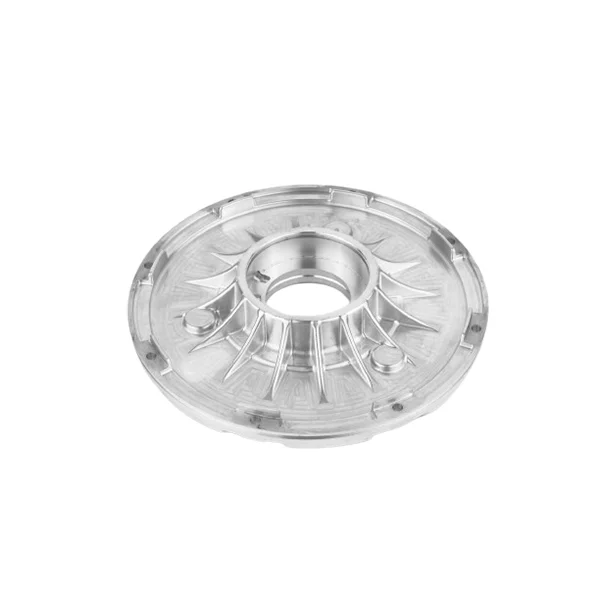The demand for high-accuracy components across industries such as automotive, medical, and semiconductor manufacturing has led to the rise of custom precision machined parts services. These services focus on creating highly specialized, tight-tolerance components designed to meet specific engineering requirements. In this blog post, as a professional CNC machined components manufacturer, Wuxi Okin will share the production process of custom precision machined parts service, from the initial design consultation to the final quality assurance.
1. Initial Consultation and Design Review
The process begins with a detailed consultation between the client and the machining service provider. The objective is to understand the part's functional requirements, operating conditions, and tolerances. During this phase, clients usually provide 2D technical drawings, 3D CAD models, or both. These documents are reviewed thoroughly to verify:
* Geometric dimensions and tolerances (GD\&T)
* Surface finish specifications
* Material selection
* Heat treatment or post-processing needs
* Regulatory or industry-specific compliance (e.g., ISO, ASME, FDA, etc.)
Any ambiguities or potential design-for-manufacturability (DFM) concerns are addressed early to avoid downstream issues. In many cases, experienced machinists may recommend minor design modifications to improve manufacturability without compromising performance.
2. Material Procurement and Certification
Once the design specifications are finalized, the next step is material selection and procurement. Choosing the right material is crucial, as it directly affects mechanical properties, corrosion resistance, thermal stability, and machining efficiency. Common materials used include:
* Metals: Aluminum, stainless steel, titanium, brass, copper, tool steels, and exotic alloys (e.g., Inconel, Hastelloy)
* Plastics: PEEK, Delrin, Nylon, PTFE, Ultem
* Ceramics and composites for niche applications
Reputable machining providers procure materials from certified suppliers, ensuring traceability and compliance with relevant industry standards. Material Test Reports (MTRs) and Certificates of Conformance (CoCs) are typically obtained to verify alloy composition, hardness, and mechanical characteristics.
3. CAM Programming and Process Planning
Once the material is in-house, the part's geometry is programmed into Computer-Aided Manufacturing (CAM) software. The CAM stage is critical for:
* Generating toolpaths based on the 3D CAD model
* Selecting the appropriate tools (end mills, drills, taps, reamers, etc.)
* Determining optimal cutting parameters (feed rate, spindle speed, depth of cut)
* Simulating machining operations to detect collisions or tool interferences
Process planning also involves determining the sequence of operations and machine setups. For complex geometries, multi-axis CNC machines (e.g., 3-, 4-, 5-axis) are often required. This stage ensures minimal waste, reduced cycle time, and consistent quality across production batches.
4. CNC Machining Operations
The heart of the production process lies in the CNC machining operations, where raw material is transformed into precision parts. Modern precision machine shops utilize a variety of CNC machines tailored to different operations, including:
* CNC Milling: For flat surfaces, slots, pockets, contours, and 3D geometries.
* CNC Turning: For cylindrical parts, including threading, boring, and grooving.
* Swiss Turning: Ideal for small, high-precision components with tight tolerances.
* Wire EDM: Used for complex internal geometries and heat-sensitive parts.
* Grinding: For achieving ultra-fine surface finishes and micron-level tolerances.
During machining, continuous monitoring is essential. Factors like tool wear, thermal expansion, and material variability can influence dimensional accuracy. High-end machines incorporate adaptive control systems and feedback loops to automatically adjust parameters in real time.

5. In-Process Inspection and Tolerance Control
Maintaining tight tolerances often requires intermediate inspection steps during machining. In-process metrology techniques include:
* Touch Probes: Mounted inside CNC machines to verify key dimensions before continuing to the next operation.
* Laser Scanners: Provide rapid, non-contact surface measurement.
* Coordinate Measuring Machines (CMMs): Highly accurate inspection of geometric features, often used on complex parts.
Critical dimensions are measured frequently to ensure they fall within specified tolerances, which can be as tight as ±0.0005” (±0.0127 mm) depending on the part. If a part begins to drift out of spec, corrective action is taken immediately to avoid scrapping large volumes.
6. Deburring and Surface Finishing
After machining, parts undergo deburring to remove sharp edges, burrs, or chips. This is often done manually or via specialized processes such as:
* Tumbling or vibratory finishing
* Ultrasonic cleaning
* Abrasive blasting
* Electrochemical deburring (ECD)
Following deburring, surface finishing processes may be applied depending on the part’s intended function and aesthetic requirements. Common finishes include:
* Anodizing (for corrosion resistance and color)
* Passivation (for stainless steel)
* Electropolishing (to improve cleanliness and smoothness)
* Powder coating or painting
* Surface texturing or bead blasting
Each finishing method is selected based on compatibility with the base material and the end-use application.
7. Heat Treatment and Post-Processing (Optional)
Certain applications require parts to undergo heat treatment to enhance hardness, ductility, or stress resistance. Heat treatment methods include:
* Annealing
* Quenching and tempering
* Case hardening (carburizing or nitriding)
* Solution treatment and aging (for precipitation-hardened alloys)
Post-machining operations such as welding, assembly, or coating application may also be performed at this stage. In multi-step production runs, post-processing ensures the parts are fully ready for their operational environment.
8. Final Inspection and Quality Assurance
Before shipping, every part passes through a rigorous quality assurance (QA) process. This includes:
* Dimensional inspection via CMM, height gauges, micrometers, and optical comparators
* Surface finish measurement using profilometers
* Visual inspection under magnification
* Functional testing (if applicable), such as pressure testing, thread gauging, or mechanical fit verification
All inspections are documented and traceable. Many precision machining facilities are ISO 9001 or AS9100 certified, requiring them to maintain detailed records and perform internal audits. If parts are destined for aerospace or medical use, First Article Inspection Reports (FAIRs) or Process Capability Reports (Cp/Cpk) may be required.
9. Packaging and Delivery
The final step involves careful packaging to prevent damage during transit. This is particularly important for delicate or finely-toleranced components. Packaging methods can include:
* Anti-static bags for electronic components
* Foam inserts or custom trays
* Vacuum sealing
* Corrosion-inhibitor wraps
Shipment is carried out through trusted logistics partners with options for tracking, insurance, and certification of shipment conditions if required. Detailed documentation, including Certificates of Conformance and inspection records, typically accompanies the shipment.
Conclusion
The production process of custom precision machined parts is a sophisticated, multi-step operation that integrates design analysis, material science, manufacturing expertise, and quality control. From initial concept to finished product, each stage plays a vital role in ensuring the final part meets stringent functional and regulatory requirements. As industries continue to demand higher levels of accuracy and reliability, advanced precision machining services remain indispensable for modern manufacturing.
Whether for a one-off prototype or high-volume production, partnering with a reliable precision machining service provider ensures that every component performs as intended in its final application - down to the micron.
www.okinmachining.com
Wuxi Okin
